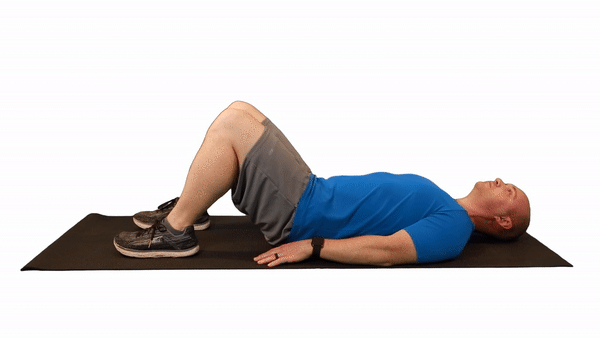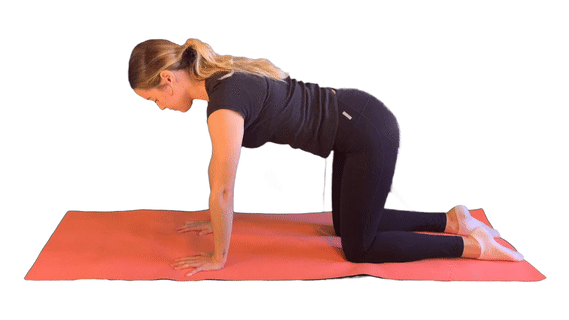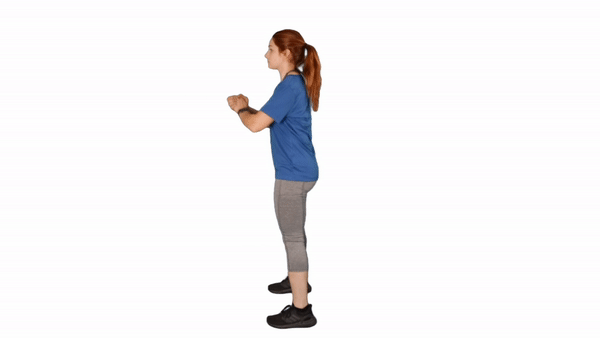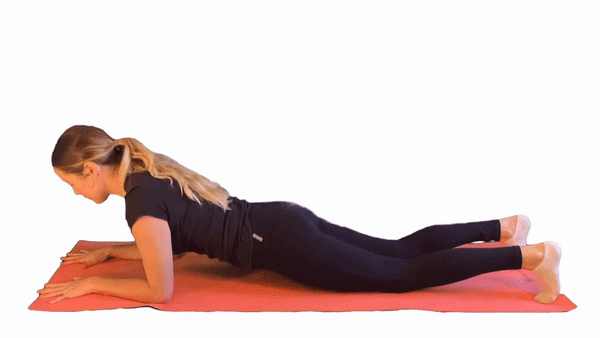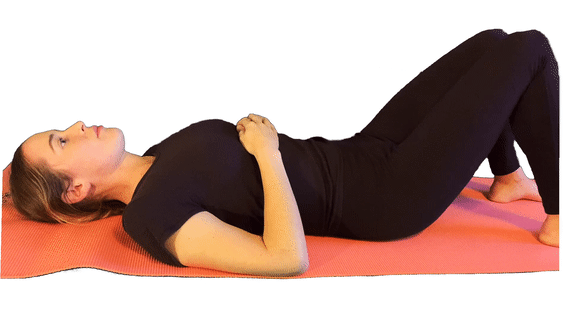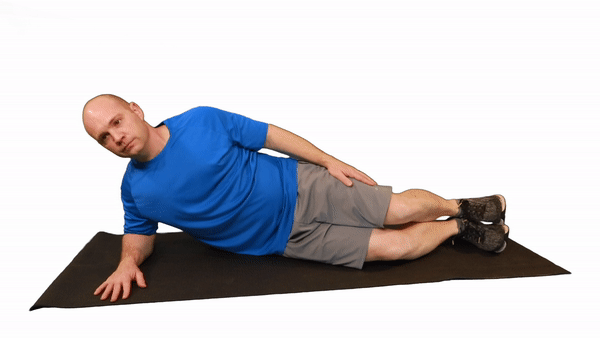How To Fix Your Anterior Pelvic Tilt
"A well-aligned pelvis is not just about aesthetics; it's about optimal function and movement efficiency."
In the initial days of a patient's admission to inpatient rehab, we meticulously assess factors such as shoulder range of motion, spinal convexity, true hip angle, and leg length discrepancies. This postural assessment, conducted by primary therapists and a team leader, unveils unique abnormalities guiding our treatment, aiding in the creation of an optimal seating system, and providing insights into premorbid factors.
In the realm of assessments, particularly those involving weakness, range of motion limitations, and balance, the guiding principle is to "always start at the pelvis." The pelvis acts as a distinctive marker for each individual, revealing valuable information about its movement capabilities and preferences. One crucial aspect examined is the predominance and flexibility of pelvic tilt: posterior, neutral, anterior, or obliquity?
These considerations extend beyond the rehab setting, influencing our everyday lives. In the context of anterior pelvic tilt, an often-overlooked condition, its impact on posture and overall well-being is substantial.
Anterior pelvic tilt involves a forward rotation of the pelvis, accentuating the lumbar curve and protruding the abdomen and buttocks. Despite its seemingly subtle nature, this misalignment can lead to lower back pain, compromised movement, and stress on intervertebral discs.
My aim for this article is to bring you more awareness to your hip positioning, specifically your pelvic tilt, learn why it matters, and teach you how to correct your anterior pelvic tilt.
Anterior Pelvic Tilt: Causes, Complications, & Treatments
Understanding Anterior Pelvic Tilt: Anatomy & Mechanics
With anterior pelvic tilts impacting 85% of males and 75% of females, it’s a concern. But before we dive into the reasons and the fixes we need to start with an anatomy lesson. Think of the pelvis as a bowl or basin. This consists of the ilium, ischium, and pubis bones. The pelvis serves as a crucial juncture connecting the spine to the legs and providing attachment points for muscles and ligaments.
In the case of anterior pelvic tilt, the lumbar spine assumes a pivotal role, as excessive anterior rotation results in an increased arch, referred to as lordosis. Additionally, imbalances in the hip flexors and extensors further contribute to this tilt, where tight hip flexors and weakened hip extensors pull the pelvis forward.
What Are Complications Linked To Anterior Pelvic Tilt?
While lordosis might be the telltale sign, the real trouble lurks beneath the surface. The increased pressure on the lower back bones can lead to a cascade of issues, including:
Muscle Fatigue & Strain: Tight muscles become overworked, leading to aches and pains.
Lower Back Pain: The most common complaint, often due to the stressed musculature and misaligned spine. Read this for more strategies to address this.
Hip Pain and Sacroiliac Dysfunction: Tight hip flexors and imbalanced muscle forces can cause discomfort in the hip joint.
Intervertebral Disc Stress: The unique positioning of these shock absorbers due to the tilt can increase their vulnerability to wear and tear.
Neck Tension: Misaligned posture can create a domino effect, causing muscle imbalances and tension in unexpected areas like the neck.
Inward Rotation of the Hip and Knee: This can impact gait and contribute to further joint pain.
Sciatica: Pressure on the hip flexors can irritate the sciatic nerve, causing radiating pain down the leg.
What Causes Anterior Pelvic Tilts?
Anterior pelvic tilt can stem from a variety of factors, ranging from lifestyle habits to muscular imbalances. Let's go through the most common ones.
Sedentary Lifestyle: Prolonged periods of sitting, characteristic of modern sedentary lifestyles, can contribute significantly to anterior pelvic tilt. This position places the hip flexors in a shortened state, leading to tightness, while the muscles of the posterior chain, responsible for hip extension, become stretched out and weakened.
Muscular Imbalances: Imbalances between opposing muscle groups around the pelvis, particularly the hip flexors and extensors, can drive anterior pelvic tilt. Weakness in the glutes and abs, coupled with tightness in the hip flexors, creates a force pulling the pelvis forward.
Poor Postural Habits: Habitual poor posture, such as slouching or overarching the lower back (lordosis), contributes to the development of anterior pelvic tilt over time. This places undue stress on the lumbar spine and disrupts the natural alignment of the pelvis.
Foot Position and Alignment: The alignment of the feet significantly influences pelvic tilt, with excessive pronation or supination creating a chain reaction affecting pelvic alignment. Excessive pronation, (inward rolling of the foot), can lead to a collapse of the arch, causing misalignments that contribute to anterior pelvic tilt. Conversely, excessive supination (outward rolling of the foot) disrupts the natural gait cycle, leading to imbalances in weight distribution and further exacerbating pelvic misalignment. Wearing high heels and even standard cushioned shoes is more likely to promote an anterior pelvic tilt.
Genetic Predisposition: Some of us may just win the genetic lottery and have some genes that make it more likely for us to have a forward lean in that pelvis. This doesn’t mean you’re destined to keep it though.
How To Identify & Confirm Your Pelvic Tilt
Accurately identifying anterior pelvic tilt is crucial for tailoring an effective correction plan. Various assessments and indicators can help individuals confirm whether they are dealing with this postural issue.
Palpate Yourself: Start by positioning the tips of your index fingers on the bony prominence at the front of your hips (ASIS - anterior superior iliac spine) and your thumbs on the back and top bony ridge of the pelvis (PSIS - posterior superior iliac spine). If your index fingers are noticeably lower than your thumbs, it indicates an anterior pelvic tilt. To observe and assess this, stand beside a mirror, ensuring a clear view, and perform various movements such as slouching, upright sitting, activating the abdominal muscles, etc.
Hip Flexor Test: Tight hip flexors are a common contributor to anterior pelvic tilt. Perform a simple test by lying flat on your back and bringing one knee toward your chest. If you struggle to bring the knee beyond a right angle without lifting your lower back off the ground, it may indicate tight hip flexors.
Lumbar Lordosis Check: Excessive lumbar lordosis, or curvature of the lower spine, is a hallmark sign of anterior pelvic tilt. Stand sideways to a mirror and assess the natural curve of your lower back. If it appears pronounced, it could indicate pelvic tilt.
Professional Evaluation: Seek the expertise of a healthcare professional, such as an occupational therapist, for a comprehensive evaluation. They may put you through a Functional Movement Screening or other assessments to determine specific factors related to your pelvic tilt to guide treatment. Educational resources on pelvic mechanics help you connect these tests with what you feel in daily movement. You can review treatment options at www.advancedspinecenters.com to see how targeted care addresses muscle imbalances, posture, and pain patterns. Using that information, you can discuss specific questions with your therapist and take a more active role in your recovery plan.
Strategies To Correct Anterior Pelvic Tilt
Once you've confirmed anterior pelvic tilt, the solution is often as simple (read: not easy) as strengthening or shortening the glutes and stretching or lengthening the hip flexors. This, combined with better postural awareness, can effectively address this common postural imbalance. Be mindful of your pelvic position throughout these movements.
Exercises
Glute bridges or hip thrusts
Squats
Planks with activation of abs (think "turn abs on" or "tilt pelvis forward")
The "Tail tuck" or the pelvic tilt: The pelvic tilt exercise involves lying on your back, flattening the lower back against the floor, and tilting the pelvis upward. This helps counter the forward tilt associated with anterior pelvic tilt.
Foundation Training: The Foundation Training routine stands out as my top recommendation for fortifying your back. This 12-minute, low-impact video, led by chiropractor Eric Goodman, guides you through effective posterior chain strengthening exercises. Buy the Foundation book with more of a variety of movements. Do it 3 times a week.
Stu McGill's Big 3: Stu McGill is renowned as a back expert. He created the “Big 3” exercises which are widely recognized for their efficacy in addressing back pain, and improving spine health, and they can help with anterior pelvic tilt too. Here is a video on how to do each of them. The “Big 3” include:
Bird dog
Curl-up
Side plank
Glute bridges
Cat Camel
Squats
Planks
“Tail Tuck”/Pelvic Tilting
Bird dog
Side plank
Stretches
Warrior one pose. Step back with one leg, bend your front knee to 90 degrees, and reach your arms overhead for a powerful pose that stretches your hips and strengthens your legs.
Couch stretch. To do this stretch, popularized by Kelly Starrett, get into a lunge position with your back knee in front of a couch as you face away. Bend your knee and place the top part of your foot on the couch cushion. lengthen your spine, square your hips, and hold, then switch sides.
Passive pelvic stretch. Sit on the edge of a seat and slouch as much as you can. Have a partner put their hands on the front of your hips (ASIS) and push toward you so that your hips roll back. It will likely take a lot of force. My patients love this one.
The PSO-RITE
The PSO-Rite. One of the major muscles of the hip flexors is the psoas muscle which is located deep within the abdomen. A tight psoas pulls the pelvis forward promoting an anterior tilt. Since it's such a deep muscle, targeting it is tough. The solution is something called the PSO-RITE which is designed to hit that spot perfectly. Here’s a video on how to use it.
Other Considerations
Consider your cardio equipment choises. Ellipticals and bikes are some of the most popular pieces of cardio equipment but both of these promote hip flexion and limit hip extension. Incorporate more cardio by running, walking, or using the Stairmaster.
Use a standing desk. Sitting for long periods means you're shortening your hip flexors and weakening your glutes (resulting in "dead butt syndrome"), both ingredients in the recipe that is the anterior pelvic tilt. Consider a dynamic standing desk to help alleviate these issues.
Take care of your feet and ankles. Strengthen your arches and ankles, consider wearing more minimalist shoes outdoors, go barefoot inside the home, and incorporate foot and ankle mobility work. I recommend The Supple Leopard by Kelly Starrett for great ways to do this.
What I Do
I was wholly unaware of the angle of the pelvis and how it affects my health and movement until I started working in inpatient rehab. Then I realized I had a pronounced anterior pelvic tilt. For me, there's a genetic component as it seems to run in my family but it was probably emphasized when I was a rower in high school and doing more cycling in college and beyond. Fortunately, addressing these type of postural concerns with my patients has made me very aware of my own posture and I attempt to self-correct frequently throughout the day.
Since this is going to be a lifelong focus of mine, I've made a habit of doing some of these movement patterns between sets at the gym. My favorites are components of Foundation Training, bird dog, cat camel, and planks. Lately, I've been doing more dead hangs as well while incorporating different hip movements in in this position.
Takeaway
Understanding and addressing anterior pelvic tilt is crucial for overall musculoskeletal health. This common postural imbalance, affecting a significant percentage of the population, can lead to various complications such as lower back pain, hip discomfort, and muscle strain. By incorporating targeted exercises, stretches, and lifestyle adjustments, you can effectively correct anterior pelvic tilt to move better and prevent health complications.
FAQ
Q: Is an anterior pelvic tilt bad?
A: When the pelvis is positioned in any one position for too No but a chronic one is. Anterior pelvic tilt itself is not inherently "bad," but it can lead to various musculoskeletal issues and discomfort if left unaddressed. While a certain degree of pelvic tilt is normal, a pelvis with an excessive anterior tilt maintained for too long has a negative effect on your health. There's a reason our pelvis is so mobile. We've evolved to manipulate it to our advantage. The goal is to keep it mobile but keep it strong in all positions.
Q: Can an anterior pelvic tilt be corrected?
A: Yes, it can be addressed through a combination of exercises focusing on strengthening weak muscles (such as glutes and abdominals) and stretching tight muscles (especially hip flexors).
Q: How long does it take to correct an anterior pelvic tilt?
A: The timeline varies based on individual factors, but consistent corrective exercises and lifestyle adjustments may show improvement within a few weeks to months.
Q: Can sitting for extended periods contribute to an anterior pelvic tilt?
A: Yes, prolonged sitting can lead to muscle imbalances and contribute to the development of an anterior pelvic tilt. Regular breaks, proper ergonomics, and stretching can help mitigate these effects.
Q: Is an anterior pelvic tilt a serious condition?
A: While not inherently serious, it can contribute to discomfort and musculoskeletal issues. Addressing it early can prevent further complications and improve overall posture and well-being.
Q: Is there a connection between anterior pelvic tilt and pregnancy?
A: Pregnancy can lead to temporary changes in pelvic alignment due to hormonal shifts and increased load on the pelvic region. Postpartum exercises and rehabilitation can aid in restoring pelvic stability.
Q: Are there any specific considerations for athletes with anterior pelvic tilt?
A: Athletes may need specialized exercises targeting their sport-specific movements and muscle imbalances. Consulting with a sports physiotherapist or trainer can provide tailored guidance.
Related:



